Archive for November, 2014
#GIVINGTUESDAY 2014
We have Thanksgiving Day for giving thanks. We have two days for getting deals. Now, we have “#GivingTuesday”, a global day dedicated to giving back. On Tuesday, December 2, 2014, charities, families, businesses, community centers, and students around the world will come together for one common purpose: to celebrate generosity and to give.
Giving Tuesday, is an idea that encourages people to give back instead of concentrating on getting more for ourselves or our own families, Giving Tuesday calls us to foster organizations in our communities and to keep the spirit of true love during the Christmas season. It’s a national day and a global movement to “give back”.
One More Soul will participate in Giving Tuesday. One More Soul (OMS) is an organization founded and maintained by people committed to their Catholic Faith. We have realized that abortion and contraception are intrinsically intertwined evils, with contraception being the root cause for abortion. We have many educational resources to foster the culture of life around the world.
Please join us December 2nd and be a part of a global celebration of a new tradition of generosity.
What can you do?
There are many ways to support One More Soul on #GivingTuesday:
Pray
The single most important action in working to change the culture of death is really quite simple: Prayer.
Sharing:
Spreading the word is fast and cost-free, yet can potentially make the biggest difference!
Please use your facebook, twitter, or other social media outlets to tell your family and friends about our ministry. Please use 1MORESOUL and the hashtag #Giving Tuesday.
Donating:
Your support can make a real difference. Just $5 can help us to send our new booklet by Bishop Conley “The Language of Love” to every diocese. One of the quickest and safest ways of donating is through our web page https://onemoresoul.com/catalog/donation-p569.html
AmazonSmile program
One More Soul could receive donations through the AmazonSmile program. Since we are a nonprofit, who has met AmazonSmile’s eligibility criteria, you, our faithful Pro Life supporter, will be able to donate a portion of your purchase price to One More Soul.
Amazon donates 0.5% of the price of your eligible AmazonSmile purchases. Support One More Soul by taking advantage of this special opportunity when shopping at: https://smile.amazon.com
A Sterilization Story The Population Controllers Do NOT Want You To Read
You’re about to read the story of eleven million women and men who were forcibly sterilized in India. And be forewarned: This is very unpleasant reading!
The horror that happened in the village of Uttawar is just one example of how population controllers inflicted forced sterilization. When the forced mutilations were over, eleven million men and women had been sterilized against their will.
In fact, India’s coercive system of sterilization quotas and targets creates a climate ripe for human rights abuses in what amounts to mass sterilization camps. Just this November, Chhattisgarh, India, saw their own version of these abuses as 15 women died in one such mass sterilization camp under what appears to be the pressure of government quotas.
With officials seemingly obsessed with population control, health and sanitation take a secondary role to the priority of meeting sterilization targets. This abuse of power cannot go on.
Unborn Baby With Spina Bifida Undergoes Amazing Operation in the Womb to Repair Her Spine
by Steven Ertelt | London, England | LifeNews.com | 11/17/14
 When their baby was 20 weeks along, doctors diagnosed Gina Beddoe and Dan Lavis’s unborn baby daughter with spina bifida. Sadly a high percentage of babies diagnosed with the medical condition while in the womb become victims of abortion — but not little Frankie Lavis.
When their baby was 20 weeks along, doctors diagnosed Gina Beddoe and Dan Lavis’s unborn baby daughter with spina bifida. Sadly a high percentage of babies diagnosed with the medical condition while in the womb become victims of abortion — but not little Frankie Lavis.
The couple said the thought of aborting her never crossed their minds and Beddoe read online about a new pioneering operation to repair baby Frankie’s spine in the womb. The government-run health care pogram agreed to fund the surgery and the couple travelled to Belgium to one of four hospitals in the world offering the operation.
It took two hours and 22 surgical staff to close the gap in Frankie’s spine and she was born in August at 35 weeks — and to her parents’ delight she was moving and kicking her tiny legs in the air. It is too early to tell if Frankie is free of any signs of the condition but the fact she can move her legs means her nervous system is working.
‘We didn’t even have to ask each other whether we would continue with the pregnancy,’Mr Lavis said.
‘We have very good support from friends and family and we felt we could cope with another child if she or he had extra needs,’ added Ms Beddoe.
It was shortly after diagnosis that Ms Beddoe read online about a new operation to repair spina bifida while the baby is in the womb. She discovered that Dr Welch, a former president of the International Fetal Medicine and Surgery Society, had close links with Professor Jan Deprest at Leuven Teaching Hospital in Belgium.
Professor Deprest was one of the first surgeons to undertake the operation and leads one of only four centres in Europe that currently perform it.
At present, surgery to close the spinal column is usually carried out just after birth, by which time damage to the nerves may already be established.
Three years ago, a seminal U.S. trial of the new surgery, which was developed by surgeons at the Children’s Hospital in Philadelphia where it has now been performed 200 times, showed it halved the rate of disability in spina bifida babies, compared with surgery after birth.
The report – published in the New England Journal of Medicine in 2011 – found that 40 per cent of babies operated on in utero needed a hydrocephalus shunt by the time they were 12 months old, compared with 82 per cent of babies who had surgery after they were born.
Of the 64 babies in the trial who had the new surgery, 42 per cent were walking at 30 months compared with 21 per cent of the 70 babies who had surgery after birth.
Although closing the spinal cord will not repair nerve damage which has already occurred, it is thought to avoid further damage and prevent the build up of cerebrospinal fluid.
‘The idea is that closing the spinal lesion in utero avoids secondary damage to the nerves and reverses the malformation,’ says Dr Welch.
After counselling, the couple opted for the new operation.
9 months after brutally cold and snowy winter, Toledo nurseries welcoming blizzard of babies
http://www.toledoblade.com/Culture/2014/11/04/9-months-after-brutally-cold-and-snowy-winter-Toledo-nurseries-welcoming-blizzard-of-babies.html
By Marlene Harris-Taylor,

This past February was one of the coldest on record, and South Toledo residents Adam and Melinda Hernandez, both 32, said it was so frigid they didn’t venture outside much. Now, nearly nine months later, the couple just welcomed a new addition, Adam Hernandez, Jr., to their family of five children.
When little Adam, just 5-days-old, grows up his parents plan to tell him, “You were the result of a bad winter. The polar vortex gave me a son,” Mr. Hernandez said.
The baby arrived a little early. Ms. Hernandez’s original due date was Nov. 18, but her doctor decided to bring Adam into the world ahead of time at ProMedica Flower Hospital to avoid some potential complications.
October, November, and December appear to be the peak months for what some area doctors are calling a small baby boom. Toledo-area obstetricians are expecting to deliver record numbers of babies this fall, because of the Arctic blast experienced in northwest Ohio last winter.
The Weather Channel called Toledo’s winter of 2013-14 the worst of any major city in the United States. Toledo broke five daily low temperature records and tied three others, with the coldest reading of -15 on Jan. 6 being the 10th-lowest temperature measured here, according to the National Weather Service.
Those temperatures combined with record levels of snowfall — nearly 40 inches in January alone — were attributed to a large pocket of very cold air sitting over the region.
Dr. Mychelle Owen of Mercy Ob/Gyn Associates in Perrysburg said she delivered nearly 20 babies in one week in October, which is typically the number of babies she delivers in one month.
“I said to [my patients], it’s been a busy time because of all the level-three snowstorms, and apparently there was nothing better for people to do,” Dr. Owen said. She added the expectant parents usually just laugh when she alludes to their babies being the result of a cold winter.
Officials at Mercy St. Vincent Medical Center said there’s been a slew of activity on the maternity floor this fall. The average number of births at the hospital increased from about 20 per week in October, 2013, to about 29 per week in October, 2014.
“Given the increases we’ve seen this fall, we anticipate total deliveries for 2014 to be about 200 more than we had in 2013,” said Sarah Bednarski, a Mercy spokesman.
Mercy St. Charles Hospital has also seen a major uptick in deliveries compared to last year at this time. There were 47 babies delivered there in October, compared to 25 in October, 2013.
Officials at ProMedica said things have not quite picked up yet on the maternity floor at Toledo Hospital. ProMedica St. Luke’s Hospital, however, had a big spike in September with 25 additional deliveries when compared to 2013, said hospital spokesman Serena Smith.
While the baby rush started as early as September for some, other local doctors report they are planning for a wave of deliveries in November and December.
“It’s gonna get crazy for us in December. We will have the busiest December that we have had in 10 years”, said ProMedica physician Dr. Terry Gibbs.
“All that snow that just kept coming last year, so people even in March kept hibernating or something,” Dr. Gibbs said.
Dr. Gibbs said he had to turn away some expectant mothers because he knows that he and his midwife are already at capacity for the number of babies they will have to deliver in November and December.
“I will be delivering double the normal numbers,” he said.
ProMedica obstetrician Dr. Sarah Puckett said she is also expecting a “50 to 75 percent increase in what we normally see this time of year. I think it is weather-related. People not being able to get out as much. People are inside, and it’s cozy and warm.”
She also thinks that for some parents having health insurance for the first time through the Affordable Care Act may have encouraged them to start thinking about babies.
Some are wondering what the coming winter might bring, and at least one local doctor is welcoming the same possibility over again.
“Snowstorms are great for business, and I hear it’s going to be another bad winter, so I’m probably looking at another busy year next year, Dr. Owen said.
As for the Hernandez family, this will be their last winter baby. Mrs. Hernandez said even though she always wanted a big family, no matter what the weather this winter, six children are enough.
Contact Marlene Harris-Taylor at: mtaylor@theblade.com or 419-724-6091.
[Note: In the early 1800s, the average American woman birthed 7 children; today the average is less than 2. In that same 200 year span, the divorce rate went from essentially zero to 18 per 1000 marriages.]
Light Elimination Therapy for the Treatment of Infertility (LET)
Joy DeFelice R.N., B.S.N., P.H.N. Director, Natural Family Planning ProgramProvidence Sacred Heart Medical Center, Spokane, WA 99220-2555 USA
Presentation and French translation. Françoise Soler
Light Elimination Therapy for the Treatment of Infertility (LET)
ABSTRACT: Infertility remains a common and often unresolved condition afflicting certain couples. Numerous animal studies have demonstrated that alterations in the light-dark cycle can affect reproduction as mediated by the pineal gland and its hormone, melatonin. To examine whether a similar disruption could affect human fertility, a pilot study was conducted with infertile women enrolled in a Natural Family Planning program.
OBJECTIVE: To examine the association between illumination present during sleep, abnormal menstrual cycle parameters, and infertility.
STUDY DESIGN 1: Forty-eight women were studied over a 10-year period. They were taught to chart their menstrual cycle following standard Natural Family Planning methods on three consecutive cycles. At the last class, subjects were informed about the hypothesized effects of ambient light on their reproductive hormones. They were provided with a list of light sources and a rating system to gauge intensity, allowing each subject’s total light score to be calculated.
Subjects were then instructed to decrease their score as much as possible for six consecutive cycles. Their menstrual cycles were examined before and after light minimization looking at 6 parameters: menstrual flow; pre-follicular; follicular phase; ovulation; luteal phase; cycle length.
RESULTS: Initially, none (0%) of the subjects had all parameters within normal range in any of three consecutive cycles. An abnormal follicular phase was found in 96% of the women, followed by luteal (64%) and ovulation (58%) phase abnormalities. The mean light score was 37.5. Establishment of a darkened sleeping environment was associated with a significant reduction in abnormal parameters within 6 cycles. Twenty-six (54%) of the women became pregnant within that same time frame, a rate equivalent to a fertile non-contracepting population.
Two of these women had a history of habitual miscarriages, and both completed the pregnancy.
The mean light score at time of conception was 4.6, representing a reduction of over 87%. 15 conceived during the first 3 cycles of darkness; 11 others during cycles 4 to 6 of darkness. 11 were < 30 years old; and 15 > 30 years old. 8 pregnancies occurred during the months of April to September, and 18 between October and March. Darkness was maintained during the pregnancies. All had a healthy delivery. 30 women (62.5%) had previous physician fertility consultation. 25 then had infertility procedures, but it was after LET that 13 (52%) conceived.
Among the 12 men with abnormal tests before LET, 6 conceived after LET.
DISCUSSION: It is known that the brain (specifically the hypothalamus and pituitary glands) is the cycling center for the hormones that govern the menstrual cycle. In early 1978, Joy gained particular insight into why and how these light influences might work within the brain from research conducted on laboratory rats by R.J Wurtman, and particularly two papers1, 2. “The pineal gland has undergone extraordinary changes with evolution. It has developed into an unusual kind of gland, a neuro-endocrine transducer. This means that this gland can take an
outward stimulus (light) which is relayed through a special optic (eye) nerve route to the pineal gland, which can then convert this light impulse to hormonal output (melatonin)”. Joy postulates that melatonin is stored in the hypothalamus and from that location influences the woman’s reproductive hormones. “Therefore, if the definite 24 hour rhythm of melatonin (normally low during the day and high during the night), is disrupted, then the normal progression of hormonal events of the menstrual cycle can also become disrupted.” Joy has collated formal details to evaluate the sleeping environment for light sources3.
a) Artificial light sources located in the bedroom (with different scores if the light is white, green, blue, or red).
b) Contributing factors that increase the level of light in the sleeping area (as thin window shades, large windows, mirrors, snow on the ground…) by artificial or natural light sources.
c) Inside artificial light source reflecting into the bedroom (as a light on all night in the hallway or reflecting from another room…)
d) Outside artificial light source reflecting into the bedroom (as streetlights or neighbor’s….) Eliminate the light source itself for the best results. In situations where the light cannot be eliminated entirely, darker window coverings; or a sleep mask; or folded cool material placed snugly across the nose and eyes will block out the light. Other helpful ideas are available.
CONCLUSION: The presence of ambient light during sleep can have a fundamental and independent effect on a woman’s reproductive function. A simple regimen of adequate light exclusion can be an effective, economical and non-invasive treatment of a certain subset of infertile couples. Well-controlled studies are required to validate these results, including assays of reproductive hormones and melatonin to delineate the physiologic mechanisms involved. Couples can correctly identify their days of potential fertility in each cycle through STM instruction. A sufficient level of darkness during sleep, and then maintaining that darkness, helps to stabilize all the hormonal phases of the menstrual cycle. These phases can be observed in the woman’s STM charted patterns. Couples also report greatly improved sleep after darkening.
REFERENCES
1. Wurtman RJ The pineal and endocrine function Hospital Practice 1969;4:32-7
2. Wurtman RJ. The effects of light on the human body. Scientific American 1975;227:60-77
3. DeFelice J. Eleventh Edition (2009).The effects of light on the menstrual cycle: also infertility.Before and after clinical observations of light elimination therapy joydefelice@comcast.net
Les effets de la lumière sur la glaire cervicale dans le cycle menstruel, observations cliniques by SERENA info@serena.ca.
Questionnaire pour évaluer la pollution par la lumière Françoise Soler acodiplan@telefonica.net
Pope to host international conference on complementarity of man and woman
By Joshua Mercer
Humanum Rome, November 3rd, 2014.
On November 17-19, 2014, the Congregation for the Doctrine of the Faith will host a colloquium in Vatican City, in cooperation with the Pontifical Council for the Family, the Pontifical Council for Interreligious Dialogue, and the Pontifical Council for Promoting Christian Unity, on the subject of the Complementarity of Man and Woman in Marriage. It is a global, interreligious meeting featuring representatives from 14 religious traditions and 23 countries. The colloquium will be opened by Pope Francis.
Sessions will be opened successively by the leadership of each of the cooperating Vatican offices, followed by the presentations and witness testimonies of leading religious figures and scholars.
Watch this official Humanum video featuring Peter Kreeft:
Each session will also premiere one of six short films treating men and women and marriage the world over (see trailer above). Each film features a variety of illuminating interviews with young and old, single and married, women and men, lay and religious, from many cultures, continents and religions. Topics range from the beauty of the union between the man and the woman, to the loss of confidence in marital permanence, to the cultural and economic woes that follow upon the disappearance of marriage.
The colloquy website is http://www.humanum.it. It contains information about the agenda, the presenters, the films, and media credentialing.



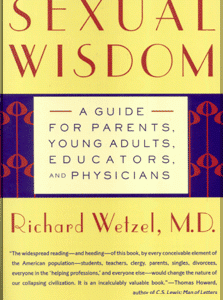
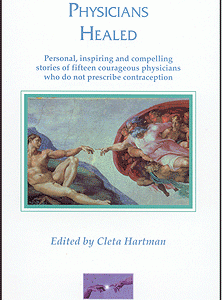

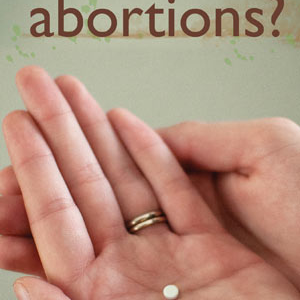

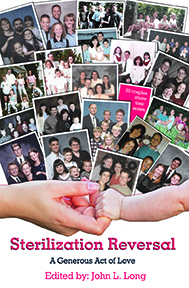
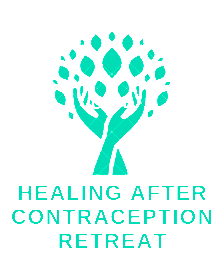
New mom, 26, suffers paralysis after contraceptive pill causes stroke
A young mother is speaking out after her contraceptive pill caused her to have a catastrophic stroke, leaving her as helpless as her 5-month-old baby girl.
Donna Watson was just 26 when she began taking Rigevidon, an oral contraceptive, following the birth of her daughter Millie. “I thought I was doing a good thing by taking the Pill,” Watson told the U.K.’s Daily Mail. But within two months of starting on the drug, she suffered a massive stroke, which her doctors said was caused by her hormonal birth control, which had raised her blood pressure and caused two large blood clots to form in her brain stem.
“Although the risk of stroke in young women is generally low, pregnancy and contraceptive pills are both significant stroke risk factors,” a spokesman for the U.K.’s Stroke Association told the Daily Mail.
“[The hormones in the Pill] … increase the likelihood of the blood clotting and this may increase your risk of stroke,” the spokesman said. “Stroke can hit you out of nowhere and rob you of your speech, your ability to walk, your memory, your independence and your dignity.”
Noted the spokesman, “This devastating condition kills three times as many women as breast cancer every year.”
According to the American Stroke Association, “Women who take even a low-estrogen birth control pill may be twice as likely to have a stroke than those who don’t, and the risk may increase if other risk factors are present.” The group says that 100,000 women in the United States will have a stroke this year.
Watson, now 28, was at home with her young family when she heard a popping sound in her ears and began vomiting. She was rushed to the University Hospital of Hartlepool, where she slipped into a coma. When she awoke, she found herself unable to speak or move.
“The doctors said I would never walk again and I would probably leave the hospital after six months,” Watson told the Daily Mail. She said hospital staff told her fiancé and parents to be prepared for a lifetime of caring for her every need, as they did not expect her to recover.
But the determined young mother blew away her doctors’ expectations, recovering sufficiently to return home after just three months in the hospital. Once home, she began relearning how to walk, talk and eat solid foods – right alongside her daughter, who was by then eight months old.
“I was having physio sessions everyday and I started being able to move my arms,” Watson told the Daily Mail. “I learned to walk again by watching Millie gain her balance.”
Still, the stroke has had lasting consequences, leaving Watson unsteady on her feet with limited mobility, and unable to use her right hand. As a result, she now requires supervision when watching Millie, who is now an active 2-year-old.
“I still need people to accompany me when I am looking after Millie as I can not run after her if she runs away,” Watson explained. But she says she hasn’t given up. “I am hoping for a full recovery and to be to look after her like other mums do,” Watson said.
As for her feelings about the contraceptive pills that led to her stroke, Watson says she believes the medical industry needs to be more open about the risks of hormonal birth control.
“I had no idea something like this would happen to me – I wasn’t made aware,” Watson said. “I think nurses should tell people more about the risks and effects the Pill can have. They should monitor your cholesterol while you are taking it. I really regretted taking that one little tablet.”
“I will never take the Pill again,” Watson added.
Posted in News & Commentary | No Comments »